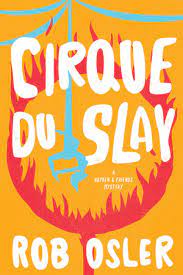Like any genre, cozy mysteries have a set of story qualities that make them what they are. For cozies, five primary qualities define the genre: amateur sleuth, light-hearted tone, no bloody violence, no graphic sex, and no hard profanity. But where does one draw the line? Can a story touch on real-life issues that might seem heavy to the reader? Is a dramatic slap violence? Is alluding to a steamy romp too much? And what about well-placed “Oh, hell!” or “damn?” Might the strict adherence to cozy conventions sell short some readers’ curiosity and appetite for something a little different?
The main character in my “Hayden & Friends [Quozy] Mystery” series is a twenty-five-year-old single gay man who lives in a big city. Bringing Hayden to life authentically on the page requires that I invite his entire self into the story, including his personal life and societal issues directly affecting him. Getting the balance right between keeping it real and keeping it cozy can be tricky. To help explore the challenge, I asked five authors who push boundaries in their cozies about their motivations and work.
In Fresh Brewed Murder, Emmeline Duncan incorporates heavier themes of gentrification and homelessness into a genre whose hallmark is a lighter tone.
Emmeline: “I’ll never push the boundaries just because they’re there, but I will when it’s a vital part of the story. The issues I dealt with are realities of my main character’s world as an operator of an inner-city coffee cart. They are authentic to her life and issues everyone in her community deals with. When incorporating societal problems, I want to be careful not to oversimplify the issues or villainize or stereotype any characters. I also do my best to keep a hopeful tone in the book.”
In Homicide and Halo-Halo, author Mia P. Manansala didn’t sugar-coat her main character’s struggle with issues of mental health.
Mia: “I wanted to lightly touch on the topic of mental health but didn’t realize how central it would become to my protagonist Lila’s character arc. At first, I wanted to keep it light because people usually pick up cozies for comfort and escapism and might not want to read about such a heavy topic. However, no matter how many times I tried to go the light and fluffy approach (this is not a knock against fluff; we all need fluff), the character would fight it, and the book would stall. Only by leaning into the mental health aspect did I feel like I was doing the character and her story justice.”
In her “Pies Before Guys” series, author Misha Popp’s main character is an unconventional—to say the least—cozy protagonist. I wondered if she hesitated about centering a series on a hero who’s also a killer.
Misha: “Not at all. I knew I wanted Daisy to be a sweet and sunny murder girl right from the get-go. But I know readers aren’t always quick to jump on board with murdery protagonists, so I definitely made sure she had enough relatable traits to balance out her vocation. Still, at her core, she’s the vigilante baker I wish I could be!”
Nikki Knight’s Live, Local, and Dead doesn’t shy away from politics and social issues. Did she have concerns about including that content?
Nikki: “When writing it, I didn’t really see this as a political book. I saw it as a celebration of local radio, which has been absolutely decimated by right-wing talk on satellite. There’s no way to tell that story without bumping up against politics. We live in a world, not in a sitcom episode from 1955. I get my inspiration for characters from my friends, family, and colleagues, who are, thankfully, a whole rainbow of people!”
In his “Dante & Jazz” series, Michael Craft doesn’t hide the fact that his main character enjoys an active sex life. Did he think twice about going there?
Michael: “I had no misgivings about this at all. On the contrary, I couldn’t imagine writing a first-person narration by a gay man whose thoughts never turn to sex. The reader is privy to Dante’s sexual fantasies and actual exploits, though they fade to black. Because it was never my intention to write a ‘traditional cozy,’ I saw nothing controversial in breaking rules that I’d never bought into.”
I was also curious whether these authors received pushback from their agents or editors or feedback from readers—positive or negative—about including their boundary-pushing content.
Mia: “I’ve mostly received positive feedback from readers about including the heavier content. My Asian American readers, in particular, have expressed gratitude about including aspects of mental health in my books as it’s such a stigmatized topic in our community. My editors will flag things in the manuscript as maybe too strong or harsh for a cozy with suggestions on how to make it more palatable, and they’re very often right. I don’t include controversial topics for shock value.”
Nikki: “Everyone on my team loved the book. It was only when it showed up on NetGalley, billed simply as a Vermont cozy mystery, that things got … interesting. A couple of great early reviews and then a wave of people who came in expecting a cute little story and were very angry with what they got. And me.”
Michael: “No pushback from my agent or editor. What little feedback I’ve gotten from readers regarding the erotic edge of my books has been only positive.”
Misha: “The overall response to Daisy and her mission has been overwhelmingly positive. I have zero regrets about including ‘controversial’ issues in the book, and for every one-star review I’ve had complaining about it, I’ve had plenty more readers telling me just how they wish Daisy could’ve saved them from the abusers in their pasts. I don’t see anything wrong with daydreaming about the ability to murder-pie yourself to safety.”
Emmeline: “No one on the business side has had an issue. Most readers have responded well and appreciate that my story feels real while still being a cozy mystery. This isn’t to say everyone loves it, but that’s fine—no book is the right fit for every reader.”
Finally, I asked the authors what advice they would give to others considering stories that push the cozy boundaries.
Nikki: “Be true to yourself, your work, and your characters. But be prepared for a small, vocal segment of folks who aren’t ready for it … and hang in there.”
Michael: “Simply write the story that you want to tell. If your goal is to deliver a story for a specific category of reader and meet their expectations, then sure, check all the boxes and stick to the rules. But if that’s not your goal, don’t sweat the imagined boundaries. You can’t please everyone.”
Misha: “If you wrote something that is unexpectedly being considered for the cozy market, ask plenty of clarifying questions regarding positioning and packaging to ensure everyone’s visions are aligned.”
Mia: “Make sure you understand the genre and its conventions well, so when you choose to push or break a boundary, you do so with purpose. I have great respect for cozy mysteries and read widely in the genre, so I know what I like about them and what areas need a little push.”
Emmeline: “Be purposeful. People don’t read cozies to be shocked but to build relationships with the characters. When you push the boundaries, you want to keep the world hopeful and a place your readers want to visit. Staying true to your vision will help you develop an audience that wants to read your work.”
***


















